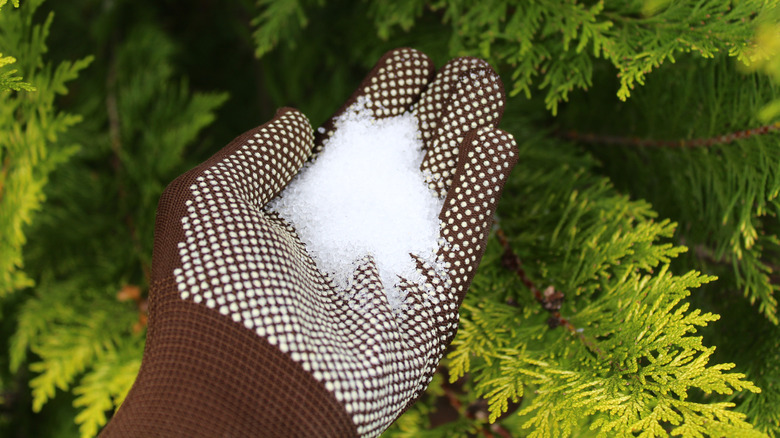Yard Mistakes: What Plants Don't Like Epsom Salt and Just How to Avoid Them
Yard Mistakes: What Plants Don't Like Epsom Salt and Just How to Avoid Them
Blog Article
Find Out About the Specific Plants That Are Negatively Impacted by Epsom Salt Application
Epsom salt, a popular family remedy for different gardening concerns, is often applauded for its valuable results on plant growth. Understanding the particular plants that can be detrimentally affected by Epsom salt is essential for any type of garden enthusiast looking to maximize their plant treatment regimen.
Roses

Roses, particularly conscious adjustments in their atmosphere, can be negatively affected by the application of Epsom salt. While Epsom salt is generally used as a fertilizer to advertise plant growth and enhance flowering, roses are among the plants that do not respond well to its application. The high magnesium web content in Epsom salt can disrupt the uptake of various other necessary nutrients by the rose plants, causing deficiencies that show up as yellowing leaves or stunted development.

Tomatoes
Tomatoes, known for their flexibility in culinary applications, can exhibit adverse effects when exposed to Epsom salt as a result of their details nutrient demands. While Epsom salt is often proclaimed as a remedy for different plant issues, consisting of bloom end rot in tomatoes, its application can result in damaging end results otherwise utilized carefully. Tomatoes are hefty feeders that call for a balanced consumption of nutrients, especially calcium, to grow. Too much Epsom salt, which is magnesium sulfate, can interrupt the fragile nutrient balance required by tomatoes, potentially resulting in deficiencies in various other essential nutrients like calcium. This discrepancy might materialize in signs and symptoms such as stunted growth, yellowing fallen leaves, or even decreased fruit production in tomatoes. As a result, when thinking about making use of Epsom salt on tomatoes, it is important to abide by recommended application prices and soil screening to protect against unintentional effects on the total health and wellness and efficiency of these beloved garden plants.
Peppers
Peppers, admired for their different shades and degrees of spiciness, can show susceptibility to unfavorable effects from Epsom salt when not applied with care and factor to consider for their certain dietary demands. what plants don't like epsom salt. Peppers, belonging to the Solanaceae household, need a delicate equilibrium of nutrients to thrive. While Epsom salt is known to increase magnesium degrees in plants, too much application can interrupt this balance, causing negative results on pepper plants
When peppers are exposed to high degrees of magnesium from Epsom salt, it can interfere with the plant's ability to take in other important nutrients like calcium and potassium. This discrepancy may materialize in signs and symptoms such as leaf staining, stunted development, and lowered fruit production. Furthermore, the excessive magnesium can change the soil pH, more aggravating nutrient check my blog uptake concerns for peppers.

Rhododendrons
Provided the sensitivity of specific plant species to discrepancies triggered by Epsom salt, it is vital to take into consideration the influence on Rhododendrons, which likewise require particular nutrient levels to flourish. Rhododendrons are acid-loving plants that favor acidic soil problems with a pH variety between 4.5 and 6.0. Epsom salt, chemically called magnesium sulfate, can modify the soil pH and interrupt the fragile balance of nutrients crucial for Rhododendron health.

To keep the ideal development and wellness of Rhododendrons, it is vital to stay clear of the indiscriminate use of Epsom salt and rather concentrate on providing the specific acidic soil conditions and nutrients that these plants require for thriving.
Azaleas
These preferred blooming plants are commonly discovered in gardens, landscapes, and parks due to their beauty and convenience. While Epsom salt is generally used as a remedy for magnesium shortage in plants, its application to azaleas can have adverse results.
Azaleas prefer a little acidic soil problems, and an unwanted of magnesium from Epsom salt can disrupt this balance, leading to nutrient imbalances and possible poisoning problems. The inaccurate application of Epsom salt can result in stunted growth, yellowing of leaves, and overall decrease in the health of azaleas.
Conclusion
Finally, it is essential to be knowledgeable about the important link specific plants that can be detrimentally affected by the application of Epsom salt. Roses, tomatoes, azaleas, rhododendrons, and peppers are some instances of plants that might not benefit from Epsom salt and could also suffer harm. It is vital to study and recognize the needs of each plant species before using Epsom salt as a plant food to guarantee their wellness and health.
Understanding the details plants that can be detrimentally influenced by Epsom salt is crucial for any kind of garden enthusiast looking to enhance their plant treatment routine. While Epsom salt is frequently made use of as a plant food to advertise plant development and improve blooming, roses are one of the plants that do not react well to its application.Extreme use of Epsom salt can likewise result in a build-up of salts in the dirt, leading to root damages and dehydration of the rose plants. While Epsom salt is understood to improve magnesium degrees in plants, excessive application can disrupt this equilibrium, leading to adverse impacts on pepper plants.
The high salt content in Epsom salt can also dry out Rhododendron roots, creating additional stress and anxiety and damage to the plant. (what plants don't like epsom salt)
Report this page